
PREV ARTICLE
NEXT ARTICLE
FULL ISSUE
PREV FULL ISSUE
MEDAL OF COIN CABINET DIRECTOR FRANZ NEUMANNChris Bower submitted this article on a recent
acquisition, a wonderful numimsatic-themed medal. Thanks!
-Editor
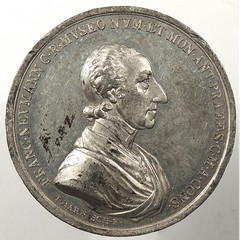 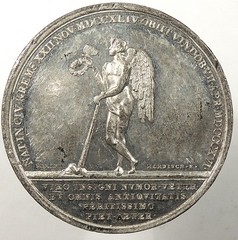 AUSTRIA: Vienna 1816 42mm Medal Franz Neumann, dir. Of coin cabinets at Wien Mus – White Metal I recently picked up a new piece for my collection that is outside of my normal collecting habits. This piece appealed to me for multiple reasons. Not only does it have a stunning reverse but it is a numismatic item with a numismatic topic. It doesn’t get better than this for me. This medal was produced to honor the passing of Franz Neumann the director of Coin Cabinets at the Wien Museum in Vienna Austria in 1816. Here is a short history of this amazing museum and its holdings. 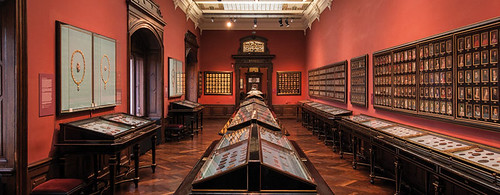 Coin Collection The first hall offers an overview of the history and development of the medal from its origins in Italy around 1400 up to the 20th century. Austrian and European orders and medals of honor are likewise presented here. The second hall focuses on the history of coin and paper money, from pre-monetary forms of payment and natural monies to the invention of the coin in the 7th century B.C. in the region of the Lydian coast and on up to the 20th century. The third hall is reserved for special exhibitions. 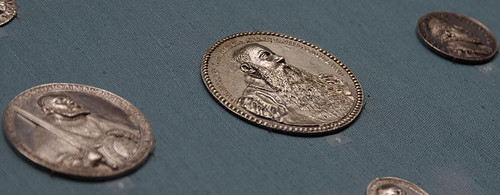 History of the collection The oldest extant inventory was established around 1547 under Ferdinand I (1503-1564). The coins listed by Leopold Heyperger, the emperor’s treasurer, are almost all of ancient Roman origin. Archduke Ferdinand II (1529-1595), ruler of Tirol, and likewise an enthusiastic collector of art objects, had his own coin collection. The cabinets in which he stored his coins still exist today: they are kept in the Vienna Coin Cabinet and at Ambras Castle. 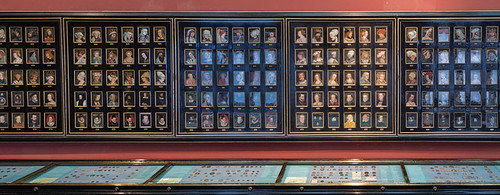 Emperor Rudolf II (1552-1612), who made his imperial seat of Prague into a cultural center, likewise expanded the holdings of the Habsburg coin collection and distinguished himself above all as a patron of the medalist’s art. But it was only a century after Rudolf’s death that the Imperial Coin Cabinet was to truly awaken and come into its own. Emperor Charles VI (1685-1740) appointed the Swedish academic Carl Gustav Heraeus as Inspector of Medals and Antiquities in 1712. Heraeus was assigned the task of combining Ferdinand’s collection from the Court Library, the Treasury of Archduke Leopold Wilhelm housed at the Stallburg, and the Coin Collection of Ambras Castle in order to establish a unified imperial cabinet at a single location. Emperor Francis I Stephen of Lorraine (1708-1765), husband of Maria Theresia (1717-1780), added a new dimension to the imperial coin collecting policy. He placed his main emphasis on coinage that was modern at the time. The year 1748 is one of the highpoints in the history of the Numismatic Collection in Vienna. At the time, Francis I Stephen of Lorraine ordered that the Numophylacium Carolino-Austriacum and the Numophylacium imperatoris Francisci I be combined. The overall inventory prepared for this occasion listed nearly 50,000 items, including 21,000 ancient coins. In the year 1774, the secularized Jesuit priest Joseph Hilarius Eckhel was appointed head of the Coin Cabinet, and this man was to become an important figure for ancient numismatics in general: His system of categorizing coins according to geographic and chronological criteria, known as the “Eckhelsche Ordnung,” is still in use today. Furthermore, Eckhel's ten-volume Doctrina nummorum veterum achieved worldwide fame and admiration for the Imperial Cabinet for the first time. During the 19th century, the findings of other historical disciplines were to further transform the field of numismatics. Purely descriptive numismatics was joined by an interest in the history of money as such, a fact which also lead to the expansion of collecting activities. Today, the Coin Cabinet contains far more than just coins, including other instruments as well such as paper money and paper securities, tax stamps, tokens and tickets, seals and seal stamps, coin scales and weights, orders, medals of honor and historic coin and medal minting stamps. In this, the Coin Cabinet has also become a collection point for documents that represent money in all its forms and functions. 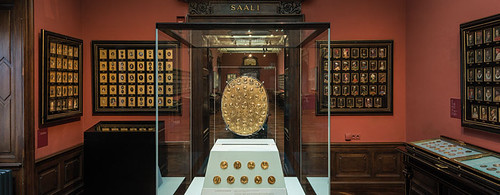 Upon the opening of the newly established Kunsthistorisches Museum on Vienna’s Ring Road in 1891, the various imperial collections-which up to then had been housed in various buildings-were finally brought together in one place. The “Cabinet of Coins and Antiquities” was initially kept in rooms on the first floor before being moved to the second floor in 1899. Since 1900, the Coin Cabinet has existed separately from the Antiquity Collection as a collection in its own right. Neumann, Franz de Paula In the wake of the abolition of the Dorotheerstiftes in Vienna, Neumann sought employment at Court (in the library or in the numismatic collection), which he first became second stringed Director under Verot without pay in February 1783 in the numismatic modern collection. After Verots death Neumann took over his salaried Director position on November 5, 1786. After Eckhels's death, on June 1, 1798, he received the Directorate of ancient Numismatics which put both cabinets once again under the leadership of a Director. Neumann was born in Krems on November 22nd, 1744. When he was 9 years old he came to Buttelstedt regulirten Chorherrn to St. Dorothea in Vienna as a choirboy. Harnisch, Johann Augustin (auch Johann Baptist) First employed in Prague in the year 1800 at the Mint in Vienna. From here his career advanced up to the Chamber medallist and a Director of the engraver Academy in 1811. Thank you to Dr. Heinz Winter from Kunsthistorisches Museum Wien for his help with biographical information on Mr. Harnisch and Mr. Neumann. This information was sent to me in German and I have done my best (poorly) to translate in to English. Most of the other information and pictures came from the museum website at http://www.khm.at/en/visit/collections/coin-collection/ 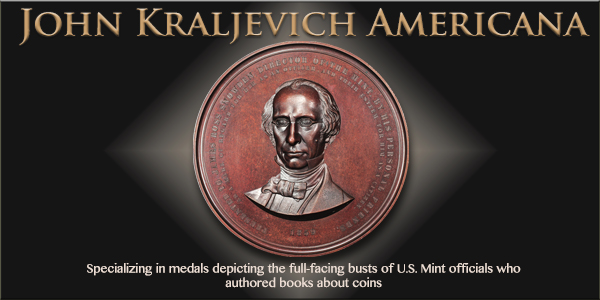 Wayne Homren, Editor The Numismatic Bibliomania Society is a non-profit organization promoting numismatic literature. See our web site at coinbooks.org. To submit items for publication in The E-Sylum, write to the Editor at this address: whomren@gmail.com To subscribe go to: https://my.binhost.com/lists/listinfo/esylum All Rights Reserved. NBS Home Page Contact the NBS webmaster 
|